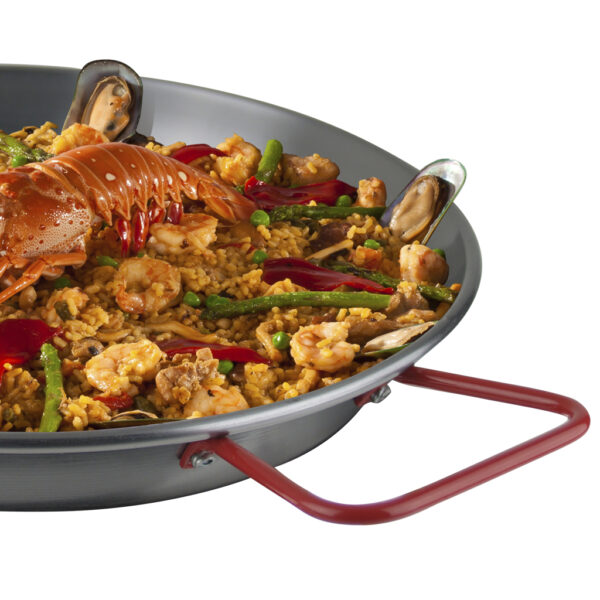With your new Magefesa paella pan, you´ll discover how easy and fun it is to prepare a wide variety of delicious paellas to savor inthe company of family and friends.
Originated in the rice-growing region of Valencia, paella was first cooked by farmers and field workers as an outdoors lunch-time meal. Rice was bulked up in a large shallow pan with whatever was at hand around the countryside: Tomatoes, onions, chicken, snails, rabbit and beans. Over time, paella´s popularity spread past Spain´s borders with many regions adding their own twist.
Paella then evolved into more of a festive dish, including different varieties of seafood, meat, sausage and vegetables.
Traditionalyy cooked over an open fire, today it can easily be prepared at home on your kitchen stove top using a smaller version of the pan.
Cleaning and care instructions for your Carbon steel paella pan:
BEFORE FIRST TIME USE: To remove the manufacturer’s protective coating fill the pan with a solution of water and vinegar and bring to a boil. If the label does not come off easily, try heating the piece slightly.
INSTRUCTIONS FOR USE: This product has been designed for use on gas stoves and open wood fires. It is not suitable to use on electric cookers. Do not overheat the pan or leave it empty over direct heat. This product is oven-safe, but not suitable to use in the microwave. Stainless steel and wood utensils are safe to use to stir ingredients. Do not exposure the piece to sudden temperature changes as this may damage the polishing.
MAINTENANCE: Wash the pan with soapy water. Dry immediately afterwards to prevent the piece from rusting. Only use non-abrasive scouring pads and detergents. This product is not suitable for use in the dishwasher. Once thoroughly dry, coat the entire surface of the pan with a bit of vegetable oil to prevent corrosion. Wrap the pan in plastic wrap and store in a dry place. If the pan rusts, remove the oxide stains with a sponge or soft sandpaper, then re-season the piece. Discoloration of the surface (a dark bluish appearance) is completely normal and indicates the pan has been properly seasoned.













